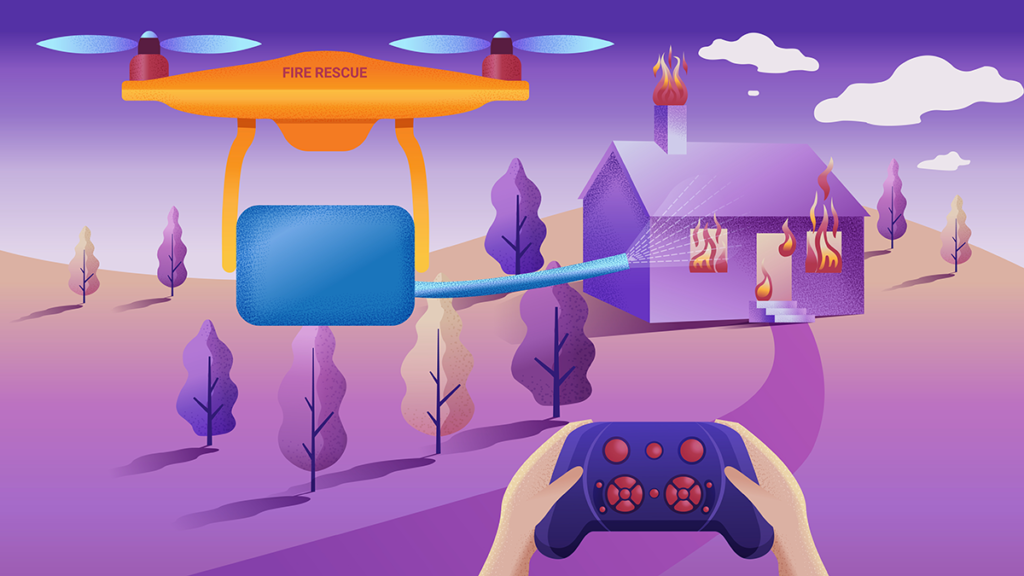The global autonomous firefighting drone market will reach a valuation of US$ 1,916.8 million in 2023 and is expected to progress at a CAGR of 16.7% to reach US$ 8,980.2 million by the end of 2033.
According to estimates from the National Fire Protection Association (NFPA), 54% of high-rise apartment buildings, 45% of high-rise hotels, and 41% of high-rise business buildings in the United States lack sprinkler systems. Additionally, one in every 14 fires has a sprinkler system failure. As populations grow and building densities rise, high-rise structures are particularly vulnerable to fires.
Rescue ladders and fire hoses typically have lengths of under 50 metres, and they are generally only used on one side of the building. The fact that most high-rise structures are located in urban cores means that traffic might delay the arrival of the firefighters at the scene.
Rising military & defence investment to elevate the autonomous drone market growth
It is projected that the military sector will continue to dominate the market for the duration of the forecast. The military employs autonomous firefighting UAV drones for a range of tasks, such as air warfare and ISR applications. Governments, businesses, and other organisations are presently attempting to integrate current drones with cutting-edge technologies like artificial intelligence. In addition to the existing autonomous drone models on the market, both businesses are investing in the development of additional drone models.
Moreover, due to the extensive commercial usage of mapping, observation, surveying, and inspection studies, the construction industry is projected to present a significant opportunity for market expansion. In the coming years, the industry is expected to rise due to the increasing use of autonomous firefighting drones.
Competitive landscape
Prominent autonomous firefighting drone manufacturers are Walkera, Ehang, Skydio, DJI, Parrot, fotokite, T-Drones and others.
The market for autonomous firefighting systems is fragmented, with both major and minor market participants. Therefore, producers must distinguish their products using cutting-edge technology and distinctive items in order to prosper in such a competitive climate. In order to maintain market positions in this highly competitive environment, product prices may need to be reduced, which could negatively impact manufacturers’ profit margins.
Fact.MR has provided detailed information about the price points of key manufacturers of autonomous firefighting drone positioned across regions, sales growth, production capacity, and speculative technological expansion, in the recently published report.
There’s also plenty of other industry editorial at IoT Insider’s sister publication, Electronic Specifier. And you can always add to the discussion at our comments section below or on our LinkedIn page here.
